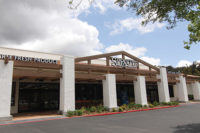It wasn’t that many years ago that the engineers at one supermarket looked at all the fuss over the Leadership in Energy and Environmental Design (LEED) recognition - that in those days consisted of Bronze, Silver, and Gold - and discovered that with just a few tweaks to the energy efficiency and environmental initiatives they had already undertaken, that they could land a Silver recognition.
That was one of the first forays by a primarily refrigeration entity into the LEED program that was most closely associated with air conditioning and commercial buildings.
These days refrigeration in general, and supermarkets in particular, are making even more rapid advancements up the LEED ladder.
No sooner does LEED come up with an even higher ranking than Gold - that of Platinum - than a Hannaford Supermarket in Augusta, Maine, has become the first supermarket to gain LEED Platinum.
This wasn’t a semi-serendipity like that other supermarket several years ago earning Silver. The Hannaford store’s energy team pulled out all stops - recycling the waste from the demolition of an abandoned structure as well as adding a green roof and an advanced filtering system for water runoff, among its many environmental and energy efficiency projects.
In terms of mechanical refrigeration, a glycol heat reclaim was used on the condenser. “We developed a program that uses 50 percent less refrigerant,” said Harrison Horning, director of Energy and Facility Services for Hannaford. “It allows us to reclaim all of the heat from the refrigeration system. It’s then used to heat the store. This heat meets most of our heating needs. The balance is made up by a geothermal heat pump.”
He also noted the use of solar power. “We have 41 kW of solar power. It is the largest in the state, we think. We use the electric power in the store.”
A conventional direct expansion system is used for case refrigeration with electronic expansion valves. “The valves save energy and do adaptive superheat control. The valve can tell where to set itself to minimize energy use.”
To monitor energy usage, the store uses two Danfoss AK255 controllers. Said Horning, “When you look at the system, energy efficiency is a big part of it. We control the central compressor systems, and we control every refrigerant display. We have temperature sensors that monitor the display cases. We are able to do this very efficiently. For example, we can skip a defrost cycle if it is not needed. Danfoss worked up some algorithms to help us do that.
“We use 1,000 monitoring control points compared to 700 in a standard store.”
The Augusta project forms the basis for future Hannaford stores. “This store isn’t a model for the industry,” said Horning. “It’s a learning laboratory. We still have some tweaking to do.”
For more information, visit www.danfoss.us.
Publication date:09/07/2009
Copyright ©2024. All Rights Reserved BNP Media.
Design, CMS, Hosting & Web Development :: ePublishing

